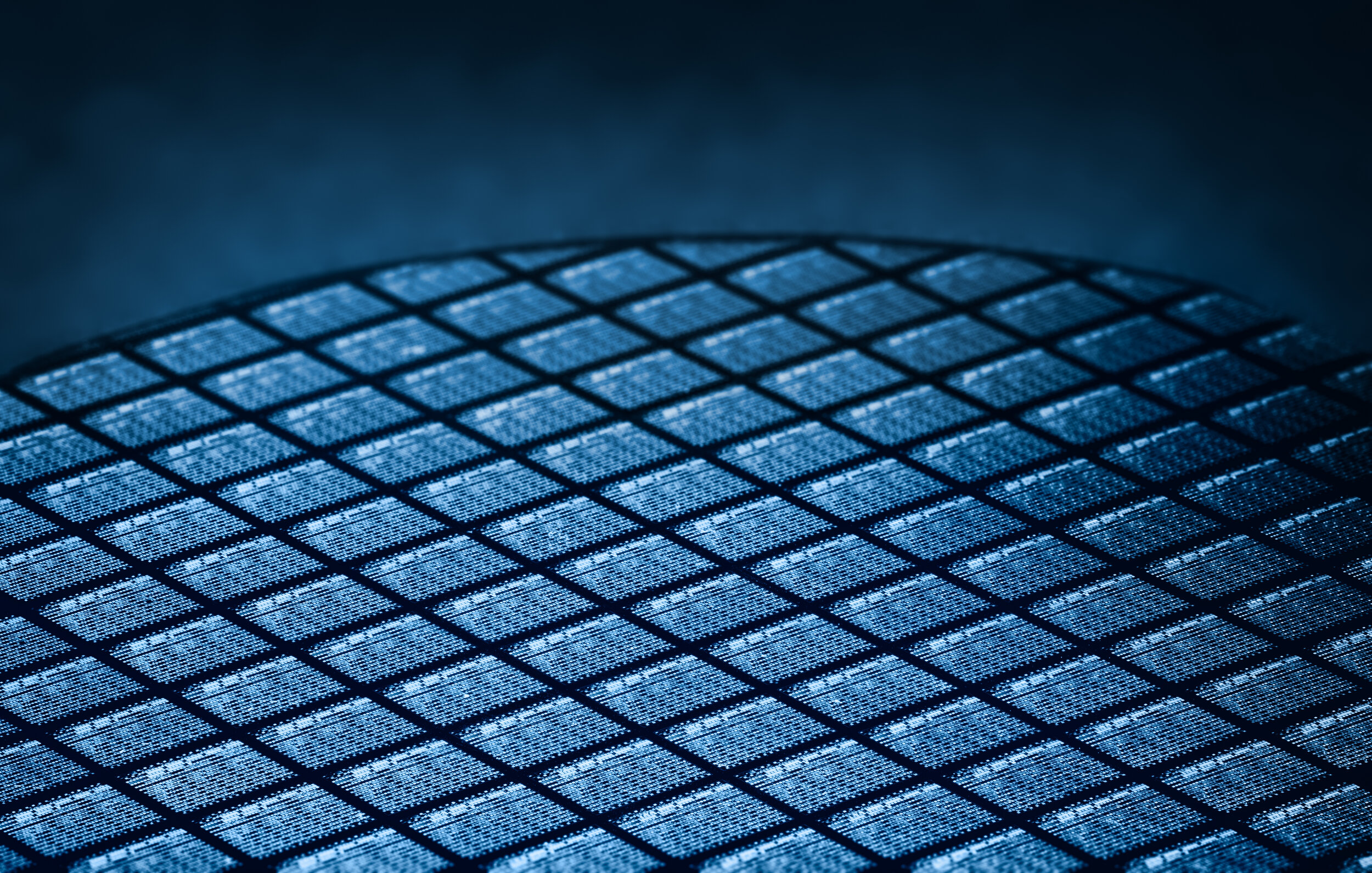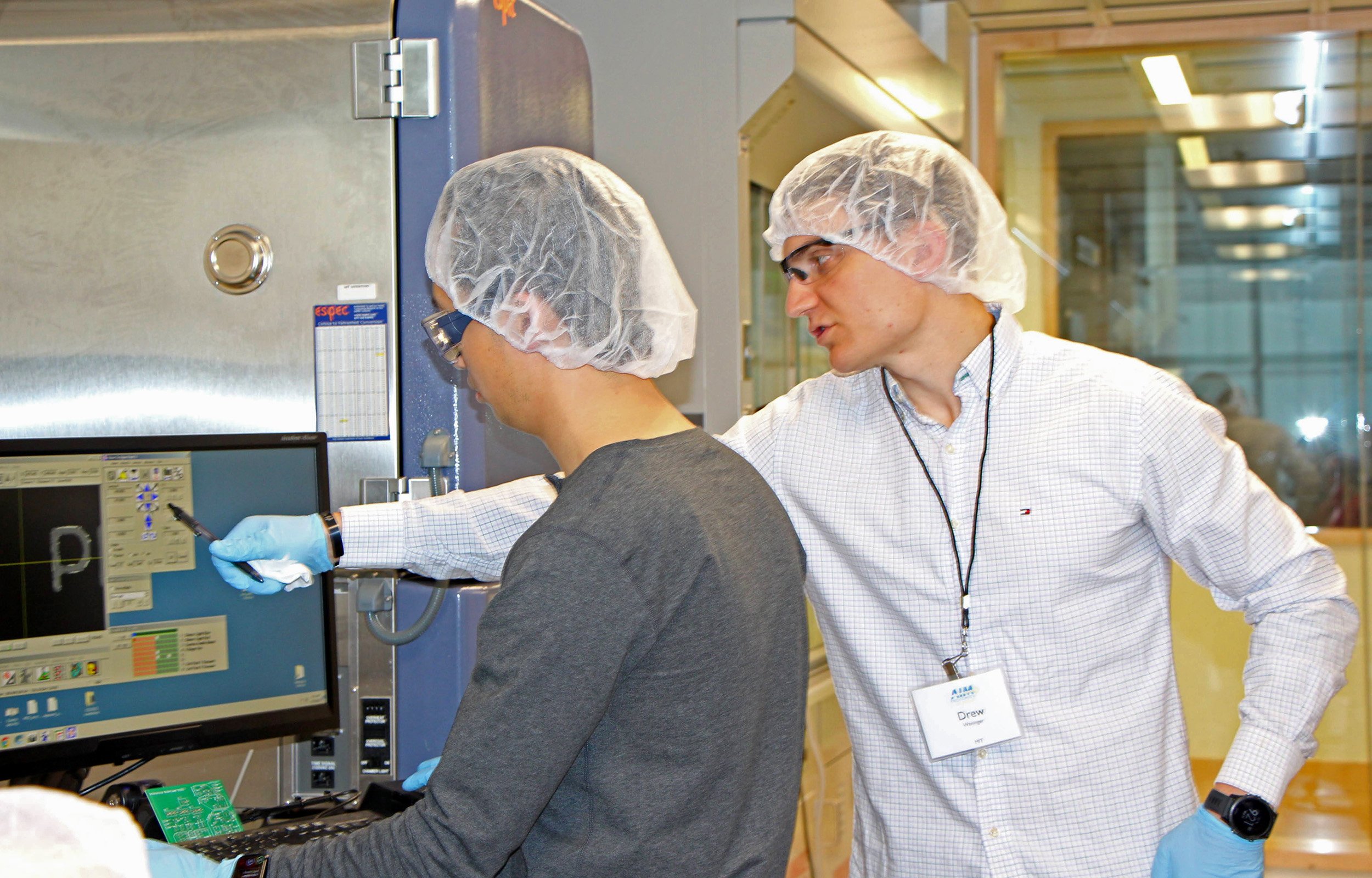
AIM PHOTONICS BOOT CAMP
COURSE TYPE: In-person
DATES: (TBD)
LOCATION: The course will be held at the Labs for Education and Application Prototypes (LEAP) at MIT and Bridgewater State University
PREREQUISITES: Undergraduate work in Physics and Optics. Knowledge of electromagnetism and photonics is a plus.
COURSE DESCRIPTION AND OBJECTIVES
AIM Photonics workshops and boot camps give students a unique, hands-on experience with testing passive photonic chips. In this course, we will cover key concepts and provide hands-on training using state-of-the-art tools at the Labs for Education and Application Prototypes (LEAP) at MIT and Bridgewater State University. This event is not strictly a lecture format, focusing instead on a combination of hands-on, problem-based learning methods to create a skilled workforce of independent thinkers who can meet the practical challenges they will face in the workplace.
YOU WILL LEARN:
Basic concepts in photonic devices - TE/TM propagation modes, light confinement, evanescence, on- chip guiding, and applications
Prototyping using integrated circuit packaging - Die-bonding of surface-mounted components using reflow
Characterizing integrated photonic devices - Collect data from on-chip straight waveguides, Mach-Zehnder interferometers and/or ring resonators
Fiber-to-chip coupling - Couple light into an AIM Photonics SOI chip using edge coupling
PIC sensors - Mid-infrared chemical sensing using integrated photonics
LiDAR imaging - Non-mechanical beam steering using integrated optical phased arrays for LiDAR sensing applications
Photonic engineering tools - Laser beam characterization and fiber splicing
Data analysis - Software to characterize photonic devices based on measured data
MATERIALS REQUIRED
Attendees are required to bring a laptop. A lab notebook and manual with detailed descriptions of the experiments will be provided.\
REGISTRATION
In order to give students plenty of hands-on opportunities and 1:1 interaction with instructors, space is limited to 12 so register early to reserve your spot!
The cost to register for this course is $6000.
A discounted rate is available for students currently enrolled in a STEM program at a U.S. university or college, as well as AIM Photonics and MIT Microphotonics Center members. To receive the discount, request promo code from photonicsbootcamp@mit.edu.
Please note:
Registrations will be processed on a first-come first-served basis.
You must meet the residency requirements set forth by the U.S. Office of Foreign Assets and Control (OFAC) sanctions list. Please read the OFAC registration guidelines (below) PRIOR to registering. Once your registration is submitted, your information will be processed through OFAC screening. Do not proceed with travel arrangements until you have received email confirmation that the OFAC screening has cleared.
OFAC Registration Guidelines - IMPORTANT
AIM Photonics adheres to the registration guidelines of the United States Office of Foreign Assets and Control (OFAC) sanctions list. U.S. laws and regulations prevent us from allowing persons ordinarily resident in certain countries and regions from participating in this event. Consequently, individuals ordinarily resident in Cuba, Iran, North Korea, Syria, and the Crimea region of Ukraine may not register. In addition, persons listed on the Specially Designated Nationals and Blocked Parties list maintained by the U.S. Office of Foreign Assets Control and the Entities List maintained by the U.S. Department of Commerce are prohibited from participating.
LODGING AND TRANSPORTATION
Attendees must make their own arrangements for their own lodging and transportation. Lyft and Uber are available.
See list of area hotels
See Airbnb - Boston
INSTRUCTORS
Dr. Anu Agarwal is a Principal Research Scientist at MIT, developing a Si-CMOS compatible platform for mid-IR sensing and imaging. She is an Optica Fellow (2022), has over 250 journal and refereed conference publications, 17 awarded patents, and 4 pending patents. She is director of electronic-photonic packaging at the MIT Microphotonics Center and leads the Lab for Education and Application Prototypes (LEAP) at MIT.nano within the Initiative for Knowledge and Initiative in Manufacturing (IKIM). Through this LEAP initiative her team has built hybrid advanced manufacturing skills training programs to bridge the Knowledge, Skills, and Abilities gap in STEM across the workforce supply chain from K-Gray. She leads a program in microchip manufacturing sustainability that seeks to build a global self-consistent roadmap across technology, ecology, and workforce.
Dr. Samuel Serna is an Assistant Professor of physics at Bridgewater State University and a 2019 OSA Ambassador. He received his doctoral degree in science - photonics at the University of Paris-Sud for research in novel techniques to test and exploit third-order nonlinear susceptibilities in silicon-photonic structures. As a postdoctoral researcher at MIT, he explored novel hybrid devices in the integrated photonics platform for telecom and mid-IR functionalities.
Dr. Jelena Notaros is the Robert J. Shillman Assistant Professor of Electrical Engineering & Computer Science at MIT. Her research interests are in integrated silicon photonics devices, systems, and applications. Jelena was one of three Top DARPA Risers, a 2018 DARPA D60 Plenary Speaker, a 2021 Forbes 30 Under 30 Listee, a 2020 MIT RLE Early Career Development Award recipient, a 2015 MIT Grier Presidential Fellow, and a 2019 OSA CLEO Chair's Pick Award recipient, among other honors.
Dr. Juejun Hu is currently the John F. Elliott Professor of Materials Science and Engineering at MIT. His research primarily focuses on integrated optics and photonics. Prof. Hu has authored and coauthored more than 150 refereed journal publications, and he has been recognized with the SPIE Early Career Achievement Award, the Robert L. Coble Award from the American Ceramic Society, the Vittorio Gottardi Prize from the International Commission on Glass, the NSF CAREER award, and the DARPA Young Faculty Award, among others. Hu is a fellow of Optica, SPIE, and the American Ceramic Society.
Dr. Lionel Kimerling is the Thomas Lord Professor of Materials Science and Engineering at MIT and the founding Director of the MIT Microphotonics Center, where he conducts an active research program in the design and processing of semiconductor materials and devices. He is also Executive of AIM Academy.
Dr. Sajan Saini is the education director for the Initiative for Knowledge and Innovation at MIT, where he oversees various online and on-site programs in manufacturing education for integrated photonics. He was previously a lecturer of writing and science communications at Princeton University, and a member of the physics faculty at Queens College of CUNY. His research interests include online education, blended learning, and VR- and digital twin-based training.
Professor Peter O’Brien is Head of the Photonics Packaging and Systems Integration Group at the Tyndall Institute, Director of the European Photonics Pilot Line (www.pixapp.eu) and Director of the European Photonics Academy (www.photonhub.eu). His research group develops novel optical coupling, laser and electronic integration technologies, focusing on wafer-scale packaging for scale-up to volume manufacturing. He collaborates with multiple academic and industry groups worldwide and is a lead partner in major research programs, including the European Quantum Flagship, Europractice and the European Photonics Digital Hub, PhotonHub Europe. Prof. O’Brien previously founded and was CEO of a start-up company designing and manufacturing specialty photonic systems for biopharma applications, which he sold in 2009. Before this, he was a post-doctoral scholar at the California Institute of Technology and a research scientist at NASA’s Jet Propulsion Laboratory, where he was involved in developing submillimeter wave devices for remote sensing. He also served as semiconductor front-end fab manager for General Semiconductor Corporation, producing power management devices. He received his Degree (Physics), Masters (Microelectronic Engineering) and PhD (Physics) from Trinity College Dublin and University College Cork.
Christian Gabbianelli is a Software Developer utilizing commercial real time engines at MIT building PIC application games and device simulations with IKIM's Virtual Manufacturing Lab.
Drew Weninger is a PhD student working in Dr. Kimerling’s Electronic Materials Group. He received his Bachelor of Science in physics from the United States Naval Academy and his Master of Science in materials science and engineering from MIT. His doctoral work focuses on developing a silicon material platform for optoelectronic packaging, one capable of scaling with future bandwidth demands in datacom/telecom, biochemical sensing, and RF communications, to name a few.
Katherine Stoll is a PhD student from Avon, CT. Katie received her Bachelor of Science in materials science and engineering and physics from MIT in 2019. Katie is all about sensing: her work spans from novel mid-IR PICs used for methane sensing to new ways of biochemical sensing in urine for NASA and the next generation of astronauts.
Luigi Ranno is a PhD student working in Prof. Juejun Hu’s Photonic Materials group. He received an integrated Bachelor and Master of Science in material science from Imperial College London. His current research involves the use of Two Photon Polymerization (TPP) to create optical structures for uses in integrated photonics, imaging optics, opto-electronic co-packaging and more.
Samuel Bechtold is an undergraduate student in Photonics Engineering at Bridgewater State University, and a research student in Dr. Serna's CHIRP Photonics lab at BSU. He has characterized nonlinearities in semiconductor materials and is working on simulations for a Supercontinuum Laser.
Peyton Brown is an undergraduate student at Bridgewater State University pursuing a double major in Physics and Photonics and Optical Engineering. He is a research student in Dr. Serna's CHIRP Photonics lab and has worked with characterizing and simulating active photonic devices for modulation of optical signals.
Joshua J. Andrews is an undergraduate student pursuing a double major in a Bachelor of Science for Astrophysics, Photonics and Optical Engineering with a minor in Mathematics and Computer Engineering at Bridgewater State University. His long-term goal is to obtain a graduate degree in aerospace engineering and make an impact in the Aerospace sector through Photonics and Optical Engineering applications with Prof. Serna.
Eli Briskin is an Electrical Engineering student at MassBay. He will be transferring to Bridgewater State University to complete his bachelor's in Photonics and Optical Engineering in Fall 2023.






